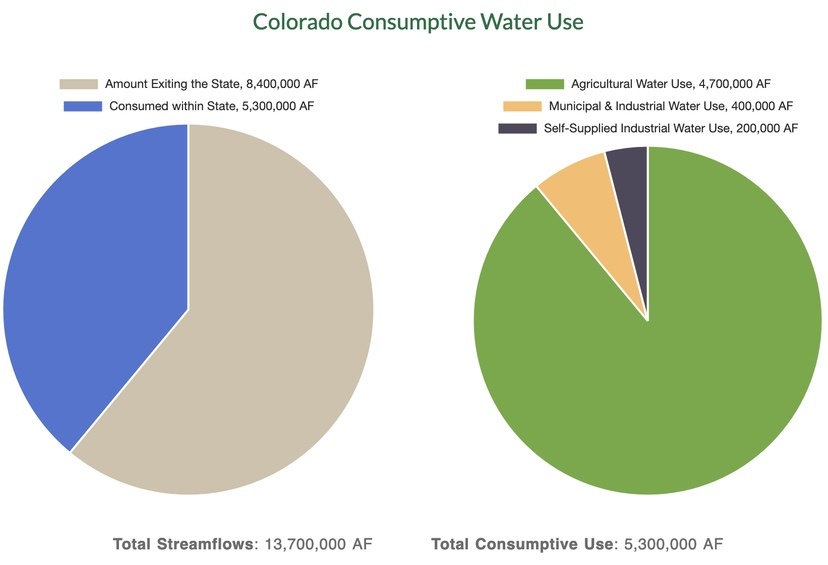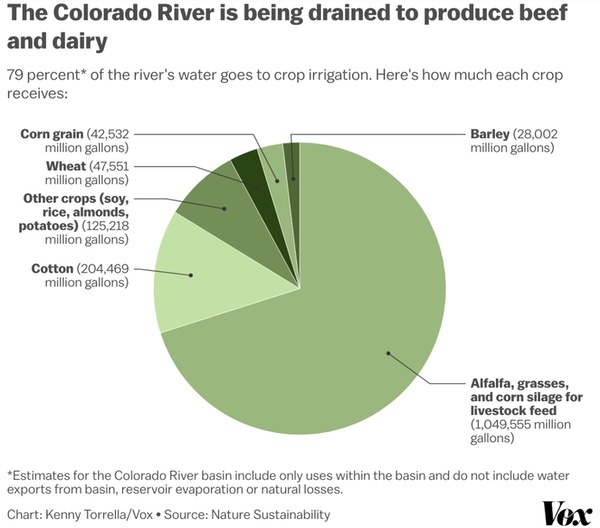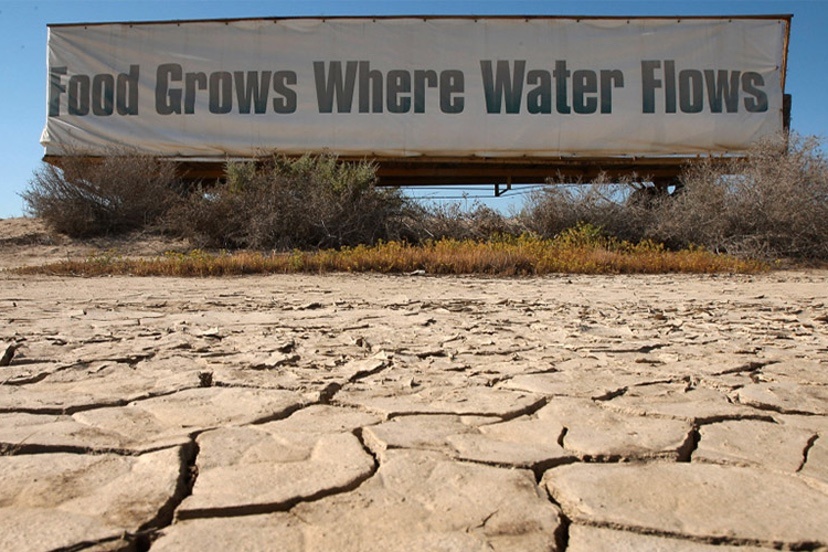My hat is off to the legislators wrote, sponsored and promoted House Bill 24-1362 during the recent session of the Colorado General Assembly, and to Governor Jared Polis for signing the bill into law. It’s a small step toward water conservation in our state.
A small step.
According to one website, a residential “graywater system” costs between $1,000 and $5,000.
Unfortunately, the law applies only to “new construction”. And it doesn’t go into effect until 2026.
By my calculations (as explained in Part Two) the new law might permit, during its first few years, up to 2,000 acre feet of residential graywater to be recycled for uses like flushing toilets and watering lawns… water initially used for washing clothes or for bathing…
2,000 acre feet… as a theoretical maximum. I think we can safely assume the actual amount of water recycled will be far less than the theoretical maximum.
2,000 acre feet is about 0.3% of the 5.3 million acre feet of water consumed annually in Colorado.
In terms of the total amount of water used in the entire American Southwest, 2,000 acre feet is utterly insignificant.
Another law passed this year by the same General Assembly makes it illegal to install “nonfunctional turf” on commercial property, which will almost certainly make it more difficult for businesses — hotels, especially — to recycle their graywater.
If we really do have a water crisis, do we really want to address it? I mean, seriously?
Because, recycling 0.3% of our water consumption in Colorado is not going to solve the problem.
I included a link in Part Two, to a page on the Colorado State University website, where Colorado’s water consumption is illustrated with a couple of graphs.

Apparently, the percentage of water diverted in Colorado and used for agriculture, is around 89% of the total 5.3 million acre feet consumed (as opposed to ‘used and then returned to the river’ as is the case with many household uses such as laundry, bathing and toilet flushing.)
4.7 million acre feet, used for agriculture. None of this water can be recycled as graywater.
The CSU website has some additional information, including a link to the 254-page Colorado Water Plan. I downloaded the Water Plan, hoping to discover how much of our Colorado water is used specifically for a certain type of agriculture which has a reputation for consuming large amounts of water.
I’m referring to beef and dairy production.
Unfortunately, the 254-page Colorado Water Plan makes no mention whatsoever of the amount of water directed to feeding cows in our state.
So I looked in the 83-page “Current and 2050 Planning Scenario Agricultural Diversion Demand” study included in the Statewide Water Supply Initiative Technical Update (2019), hoping to find accurate numbers for the impacts of the beef and dairy industry on Colorado’s water crisis.
Again, no such information was provided.
Apparently, the people most involved in studying Colorado’s water crisis either have limited interest in understanding the impacts of livestock on our water supply, or haven’t yet got around to looking into the subject.
Or else, they don’t want us to have easy access to the information, for whatever reason.
To find out the impact of livestock on the Colorado River — the ramifications on the water crisis in the American Southwest — we have to look elsewhere.
We can look, for example, at the numbers provided by Nature Sustainability, a website connected with the magazine Nature… and shared by Vox.com

Of the nearly 1.5 trillion gallons of Colorado River water used for crop irrigation each year, most of it — slightly more than 1 trillion gallons, or about 71% — is used for growing alfalfa and other types of feed for livestock. Mainly cattle.
Basically, if Americans stopped consuming beef and dairy products, we could stop growing the thirsty crop called alfalfa… and we would almost certainly solve the water crisis in the American Southwest.
Except, perhaps, for a little problem with Saudi Arabia.
From an April 2023 article by Kenny Torrella, on Vox.com:
The stress on the West’s water supply due to alfalfa is especially acute in Utah: A staggering 68 percent of the state’s available water is used to grow alfalfa for livestock feed, even though it’s responsible for a tiny 0.2 percent of the state’s income…
California takes more water from the Colorado River than any other state, and most of it goes to the Imperial Valley in the southern part of the state. It’s one of the most productive agricultural regions in the US, producing two-thirds of America’s vegetables during winter months. But the majority of the Imperial Valley’s farmland is dedicated to alfalfa and various grasses for livestock.
In Arizona, Phoenix’s backup water supply is being drained to grow alfalfa…
That particular Arizona alfalfa is grown by Fondomonte, owned by Saudi Arabia’s largest dairy company. The crop is then shipped 8,000 miles to the Middle East to feed Saudi Arabia’s domestic herds.
Nowhere in the the 254-page Colorado Water Plan do the state’s foremost water experts discuss the alfalfa problem.
Nowhere in the Statewide Water Supply Initiative Technical Update can we find a discussion about the livestock industry draining our rivers dry.
But we now have a new “graywater” law, signed by Governor Jared Polis, that might recycle up to 2,000 acre feet of municipal water. While a trillion gallons is used to grow alfalfa and grass for cows.
Where are the members of the water industry, and where are the elected representatives, willing to tell us the truth?

